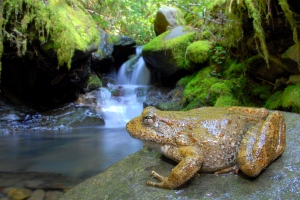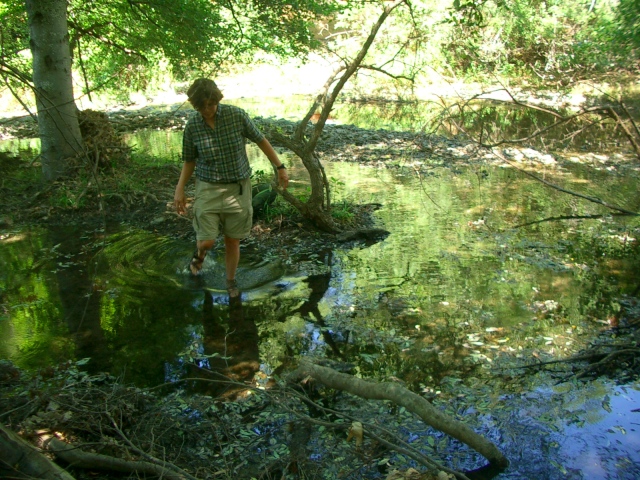
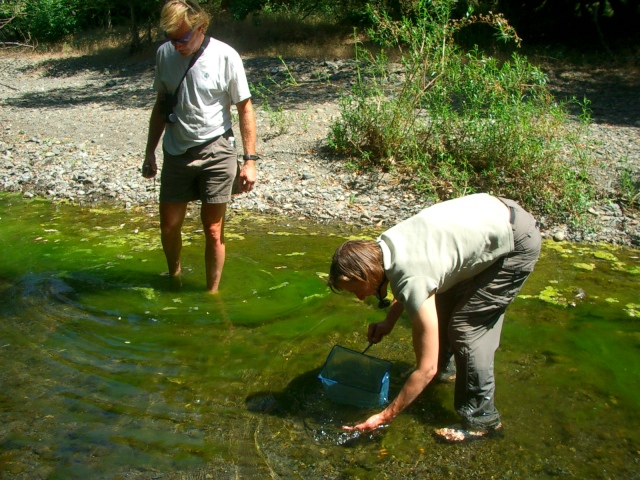
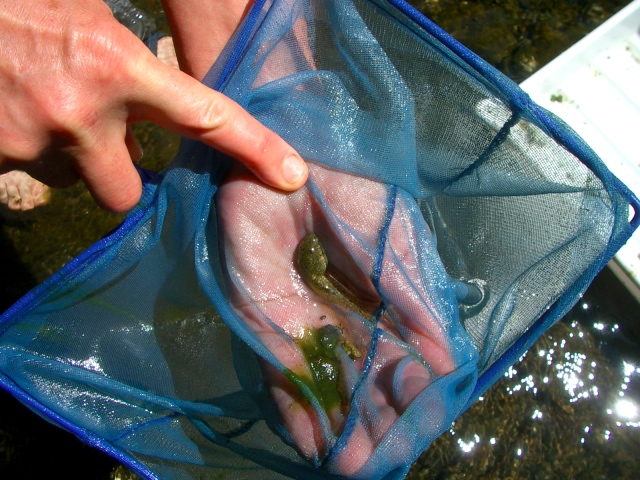 Credit: Ari Daniel Shapiro.
Credit: Ari Daniel Shapiro.
The goal of Dever’s work is to figure out how genetically diverse the frog populations are. When these frogs mate, the male jumps on the female’s back and holds on. It’s called amplexus. With the male hanging onto her back, the female uses her hind legs to clean the surface of a rock until it’s smooth enough to glue her eggs to it. The male fertilizes the eggs in the water. Each of those fertilized eggs gets half its DNA from its mom and half from its dad. The bigger the population, the more different combinations of DNA there are in each generation. That means higher genetic diversity, and a healthier, more resilient population.
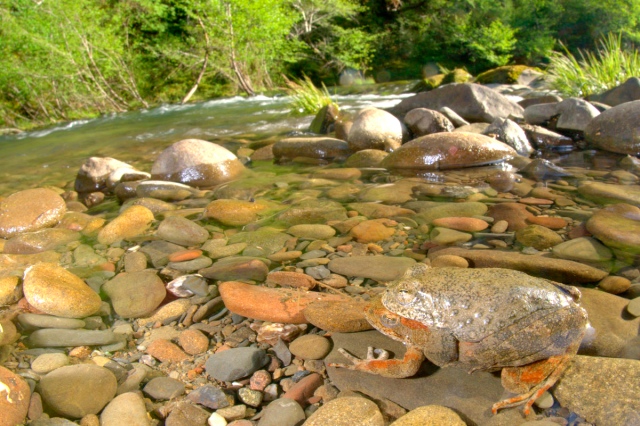
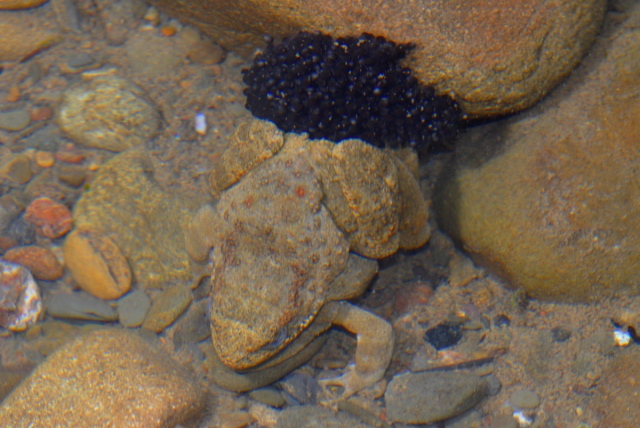 Credit: Alessandro Catenazzi
Credit: Alessandro Catenazzi
Although Dever didn’t take any samples on the day that I visited, in general she clips off a small tip of tadpole tail and tip of frog toe to get their DNA. Dever puts the samples in ethanol and records their GPS locations, and then she goes back to her genetics lab.
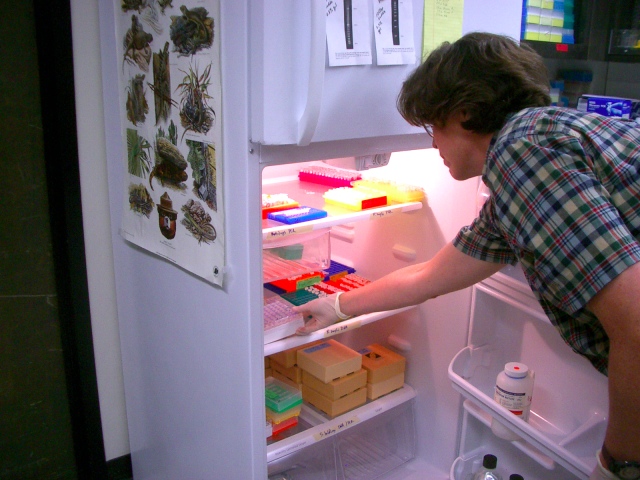
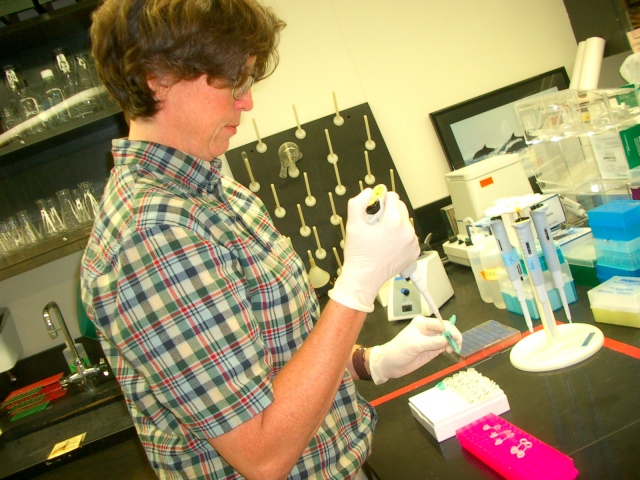 Credit: Ari Daniel Shapiro
Credit: Ari Daniel Shapiro
Dever puts the DNA through a series of procedures, first copying regions of it over and over again to make a lot more of it. Because DNA has a negative charge, Dever can move it through a square piece of gel (it looks like a clear slab of jello) by applying a positive charge at the other end. Take a look at this photo of two of Dever’s gels. Each column (or lane) corresponds to a different individual frog.
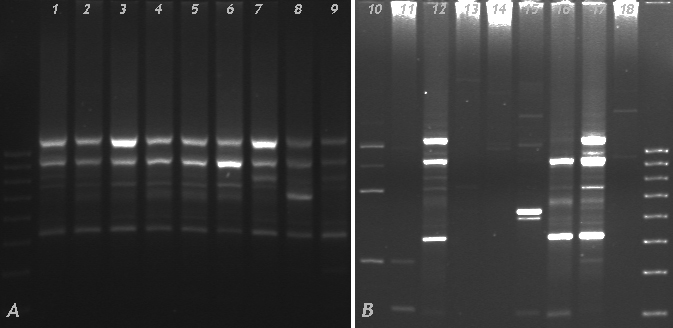 Credit: Jennifer Dever
Credit: Jennifer Dever
Each white band is a different fragment of DNA. The DNA in the gel on the left has all moved to pretty much the same vertical positions. That means these frogs have very similar DNA. These frogs are more closely related and come from a smaller, less genetically diverse population. The DNA in the gel on the right has more fragments of different sizes. These frogs have dissimilar DNA, they come from a bigger population, and they’re more distantly related.
By using this technique, Dever’s able to grab the DNA from a handful of frogs or tadpoles in a particular creek and know just how healthy (in terms of genetic diversity) that population is. In the creek, Dever can’t tell how the frogs are related. But in the lab, the answer’s clear. For Dever, every frog counts, and it’s the DNA that adds up.
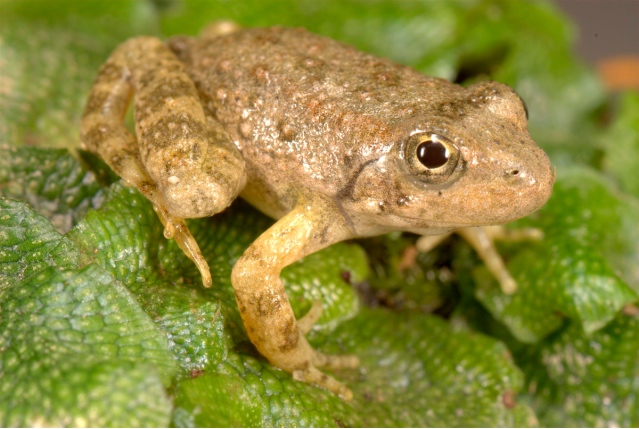 Credit: Alessandro Catenazzi
Credit: Alessandro Catenazzi
 Listen to Plight of the Yellow Legged Frog radio report online.
Listen to Plight of the Yellow Legged Frog radio report online.
37.521151 -121.748042
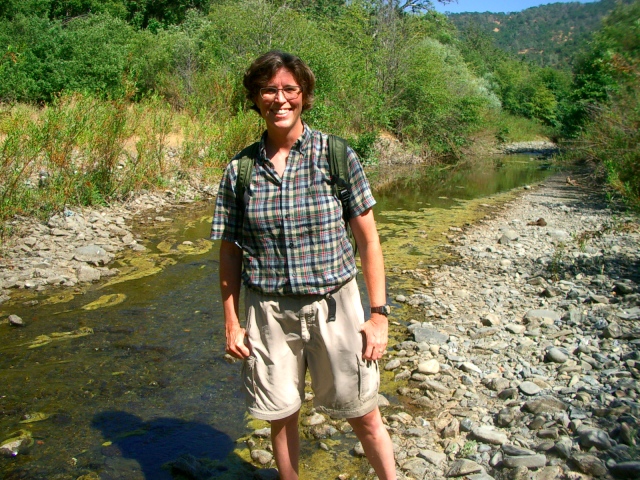 Credit: Ari Daniel Shapiro.
Credit: Ari Daniel Shapiro.
